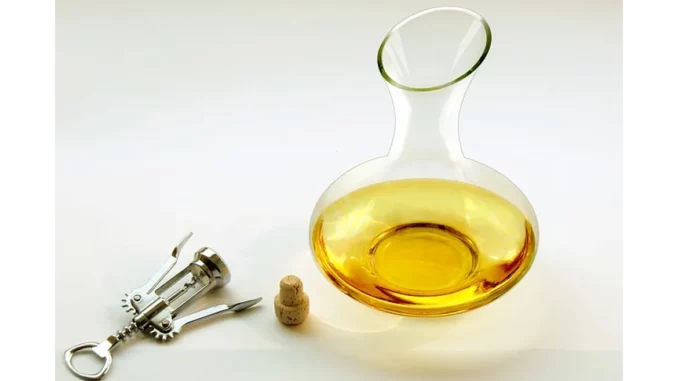
When it comes to mastering the art of wine serving, there’s one golden rule that often goes overlooked: decanting. During a recent in-depth conversation with wine connoisseur Amanda Clarke, I delved into the nuances of why and how to decant both young, tannic reds and old-vintage wines. Clarke, who boasts over a decade of experience as a sommelier at one of the most celebrated restaurants in London, shared invaluable insights that will elevate your wine-serving game to new heights.
Setting the Scene
As Amanda Clarke welcomed me into her cosy, yet elegant, home, it was clear that she lived and breathed the world of wine. The room was adorned with a tasteful collection of wine bottles and decanters, each with its own story to tell. “Wine is more than just a beverage; it’s an experience,” Clarke began, with an enthusiastic twinkle in her eye. “And decanting plays a crucial part in that experience.”
The Science Behind Decanting
Clarke explained that decanting is essentially the process of pouring wine from its bottle into another vessel, typically a decanter, to aerate it. “Young, tannic reds and old-vintage wines benefit immensely from decanting,” she said, pouring a rich, ruby-red Bordeaux into a wide-bottomed decanter. “For young wines, the tannins are often harsh and need time to soften. Decanting allows the wine to interact with the air, which helps to mellow out those tannins.”
But it’s not just young wines that need attention. Clarke also highlighted the importance of decanting older wines, albeit for slightly different reasons. “Older wines tend to develop sediment over time. Decanting helps to separate this sediment, ensuring a smoother pour and a more refined taste,” she explained. “Additionally, it allows the wine to ‘breathe,’ which helps to bring out its secondary characteristics—those subtle, nuanced flavours that have developed over years of aging.”
The 30-Minute Rule
One of the key takeaways from our conversation was Clarke’s endorsement of the ’30-minute rule.’ “Decanting both young, tannic reds and old-vintage wines for about 30 minutes is generally a good rule of thumb,” she advised. “For young wines, this period allows the tannins to soften, making the wine more approachable and enjoyable. For older wines, it helps to open up the more complex flavours that have been locked away.”
Clarke demonstrated this with a young Cabernet Sauvignon and an aged Bordeaux. “You’ll notice that the young Cabernet, once decanted, loses some of its astringency and starts to reveal more fruit-forward and secondary characteristics,” she said, swirling the wine in the decanter. “Meanwhile, the aged Bordeaux becomes more harmonious, with layers of flavour that might have been missed if it were poured straight from the bottle.”
Tools of the Trade
While the process of decanting may sound daunting to some, Clarke assured me that it doesn’t require any specialised equipment. “You don’t need a fancy decanter to achieve good results,” she said, pointing to a simple, yet elegant glass vessel. “Even a juice carafe can work in a pinch. The important thing is to have a vessel with a wide base to maximise the wine’s exposure to air.”
However, if you do want to invest in a decanter, Clarke recommended one with a wide base and a simple design. “A generously-sized decanter that can hold more than 750 millilitres and is easy to clean is ideal,” she suggested. “The wide base is crucial as it exposes more surface area of the wine to the air, accelerating the aeration process.”
The Art of Patience
As we sat down to enjoy the decanted wines, Clarke stressed that patience is key. “Wine is a living thing. It evolves, and giving it time to interact with the air can make a world of difference,” she remarked. “Rushing this process can mean missing out on the full spectrum of flavours and aromas that the winemaker intended.”
She also touched on the controversial topic of using aerators. “Aeration devices can speed up the process, but they are not a substitute for proper decanting, especially for older wines,” she cautioned. “Aerators are more suitable for bold, young wines that need a quick burst of air to open up. But for aged wines, decanting is a more delicate and respectful approach.”
A Final Toast
Our conversation ended with Clarke offering a final piece of advice for wine enthusiasts. “Whether you’re an experienced sommelier or a casual drinker, understanding the importance of decanting can significantly enhance your wine experience,” she said, raising her glass. “It’s not just about following rules; it’s about appreciating the journey of the wine from the bottle to the glass.”
As I left Clarke’s home, I couldn’t help but feel inspired by her passion and expertise. Her insights into the art of decanting have given me, and hopefully you, a deeper appreciation for the complexities and joys of wine. So the next time you uncork a bottle, take a moment to let it breathe. Trust me, your palate will thank you.
Oliver


Be the first to comment